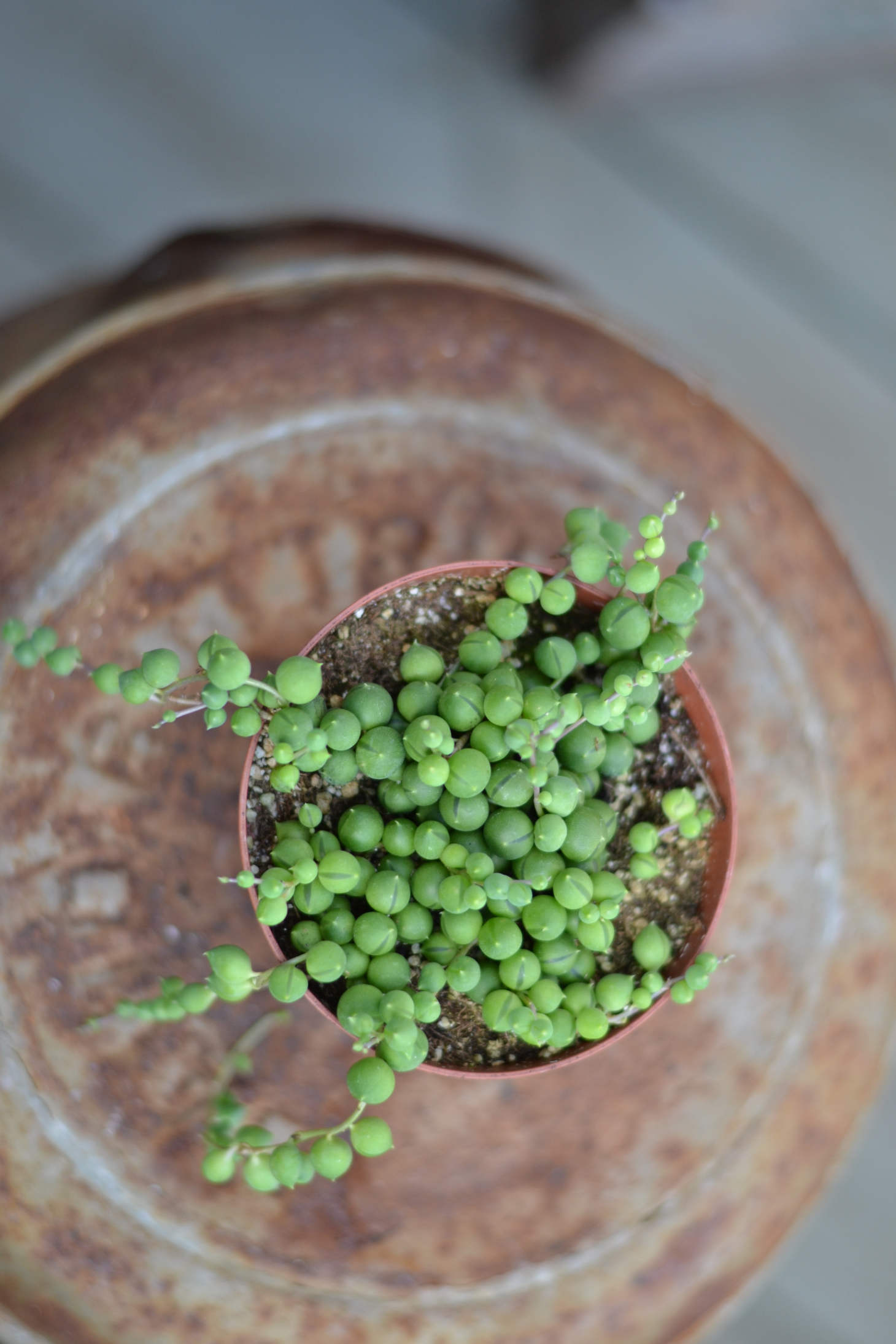Propagating Trailing Succulents
Trailing succulents are popular for their long, cascading stems and eye-catching leaves. If you love these plants, you might want more of them for your home or to share with friends. You can easily multiply your favorite trailing succulents by propagating cuttings or leaves, making it simple to grow your collection.
Knowing the right way to propagate saves time and helps your new plants thrive. There are a few trusted methods to use, and you can even grow roots in water or soil depending on the type of succulent you have. With a little patience and care, you’ll see new growth and healthy plants quickly.
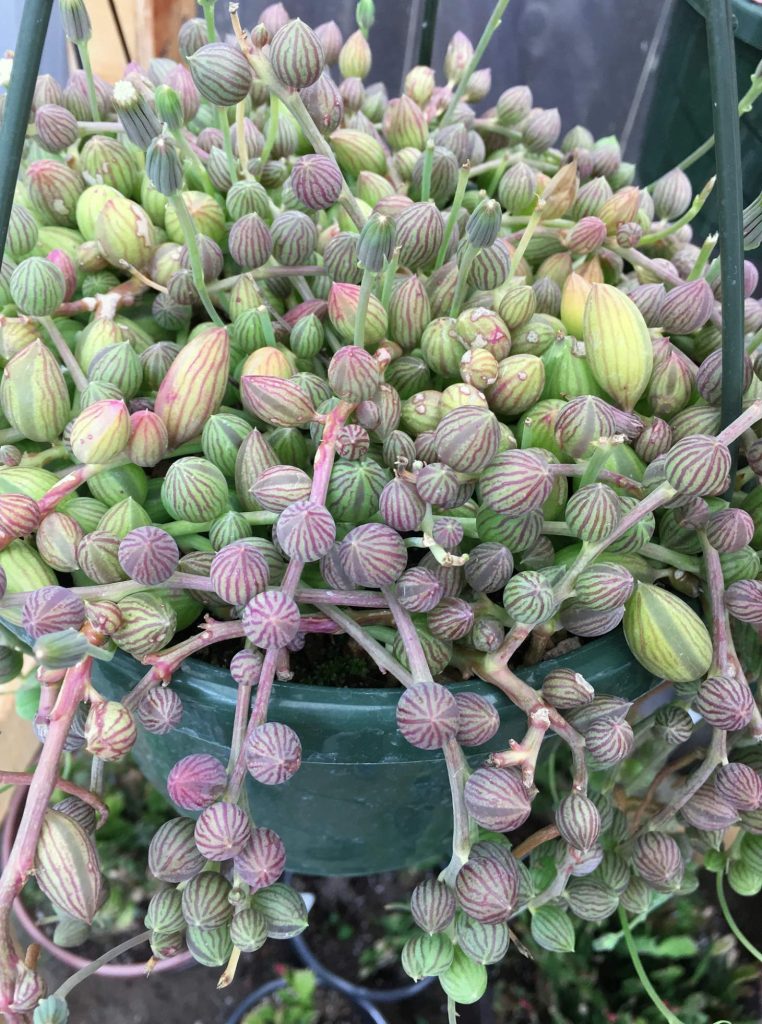
Key Takeaways
- Learn simple ways to multiply trailing succulents at home.
- Use the best techniques to care for young plants and avoid common problems.
- Find answers to common questions about propagation and succulent care.
Understanding Trailing Succulents
Trailing succulents are known for their long, hanging stems and unique foliage. They add a dramatic look to shelves, hanging baskets, and windowsills by growing downward in loose strands or clusters.
Popular Trailing Succulent Varieties
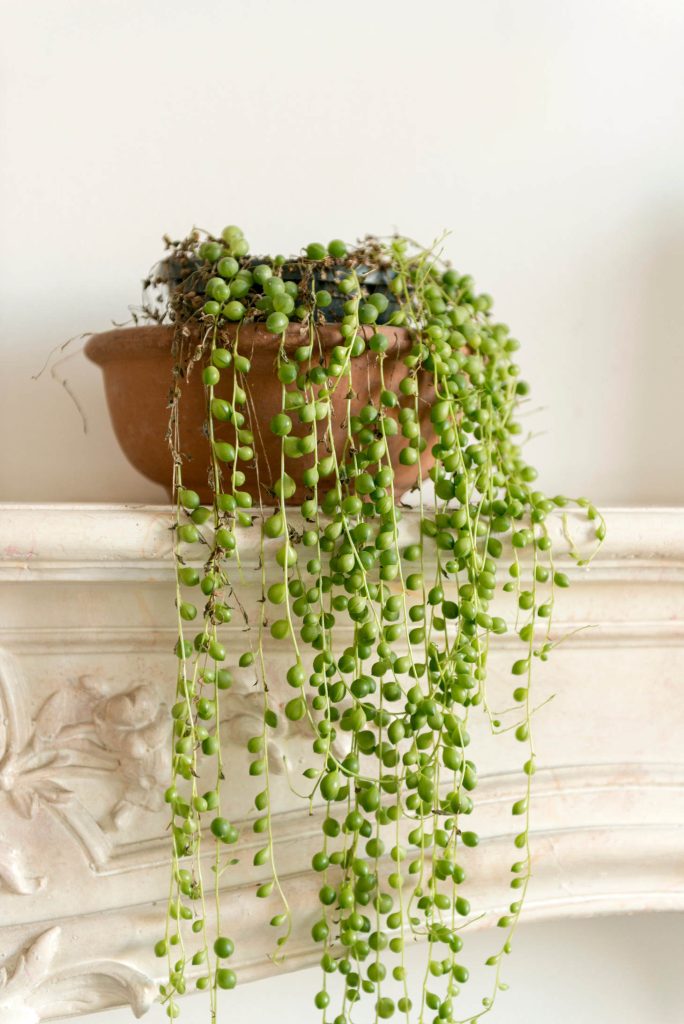
(Senecio rowleyanus)
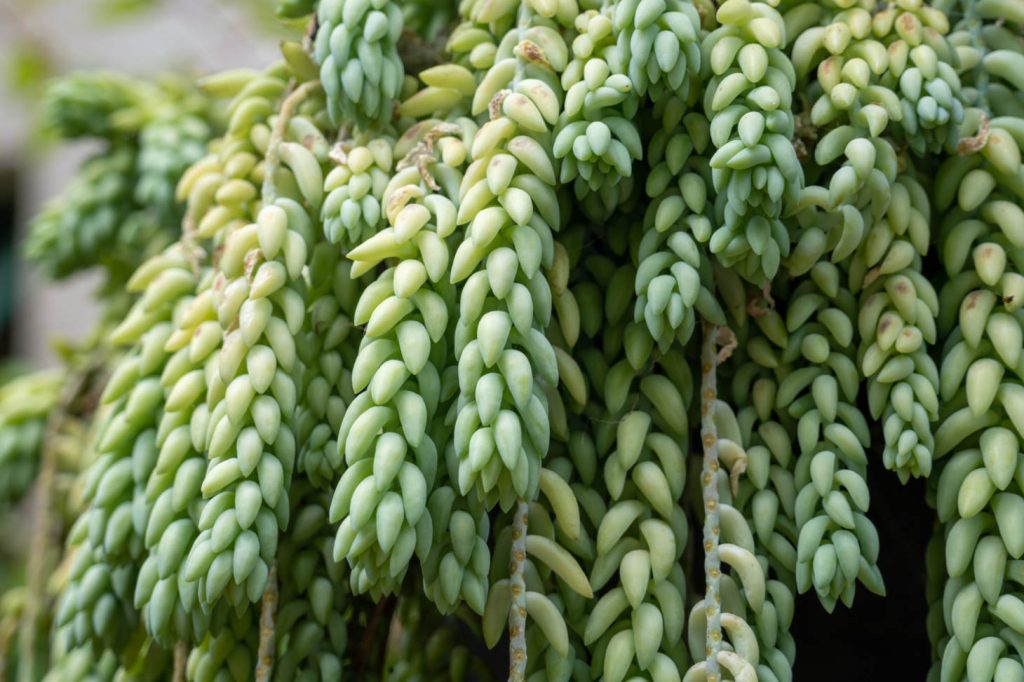
(Sedum morganianum)

(Ceropegia woodii)
Several trailing succulents are especially popular for their attractive shapes and colors. String of Pearls (Senecio rowleyanus) features small, round leaves that look like green beads. Burro’s Tail (Sedum morganianum) has thick, blue-green leaves that cover its long stems. String of Hearts (Ceropegia woodii) produces delicate, heart-shaped leaves with purple undersides and slender vines.
Here are a few more commonly grown types:
- String of Bananas (Senecio radicans)
- String of Fishhooks (Senecio radicans ‘Glauca’)
- Ruby Necklace (Othonna capensis)
These varieties thrive both indoors and outdoors in mild climates.
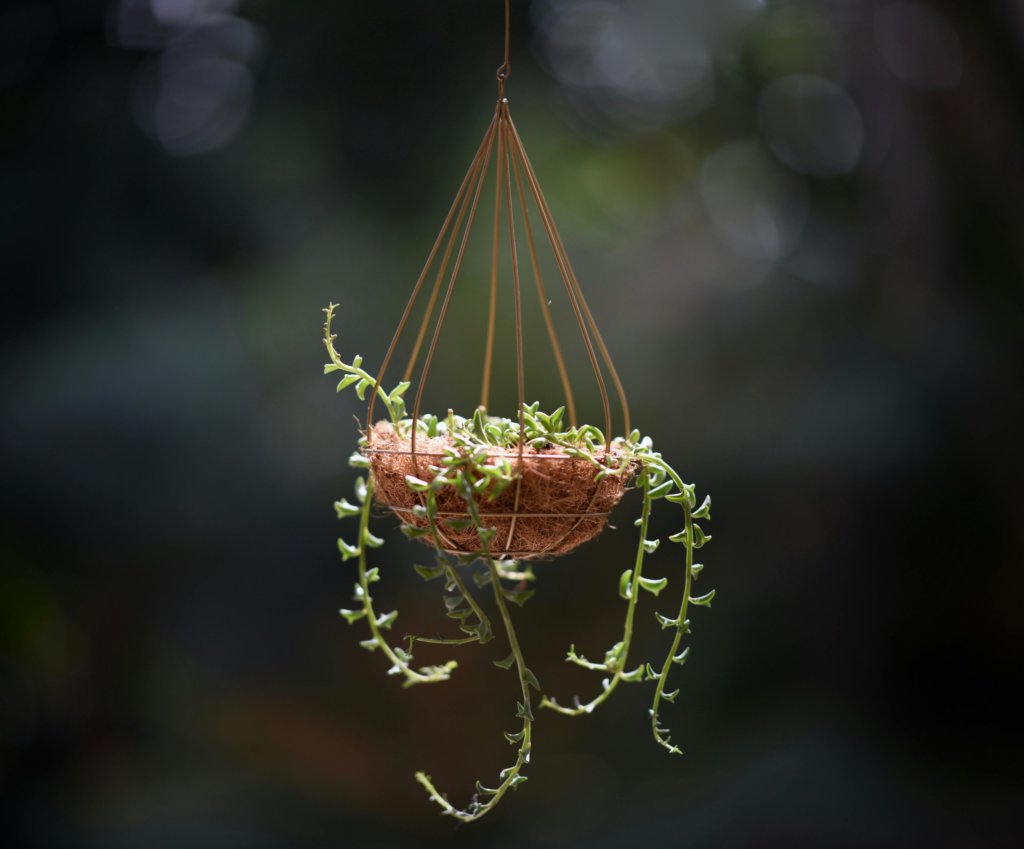
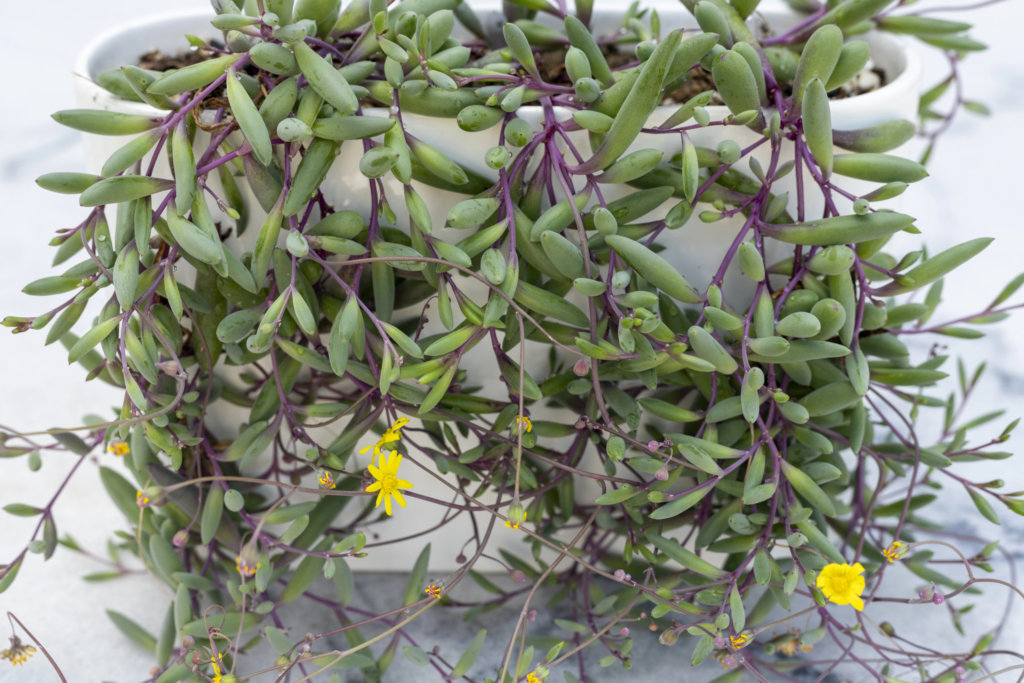
Growth Habits and Characteristics
Trailing succulents grow by extending their stems, often hanging down rather than growing up. The leaves and stems are usually plump, which helps the plant store water during dry periods. Many have a natural tendency to root wherever the stem touches soil, making them easy to propagate.
You will notice that most trailing succulents have fragile stems, so they can break easily if not handled carefully. Their dense clusters and trailing nature make them ideal for hanging containers. While some varieties produce small flowers, their main appeal is their foliage and growth pattern.
Ideal Environmental Conditions
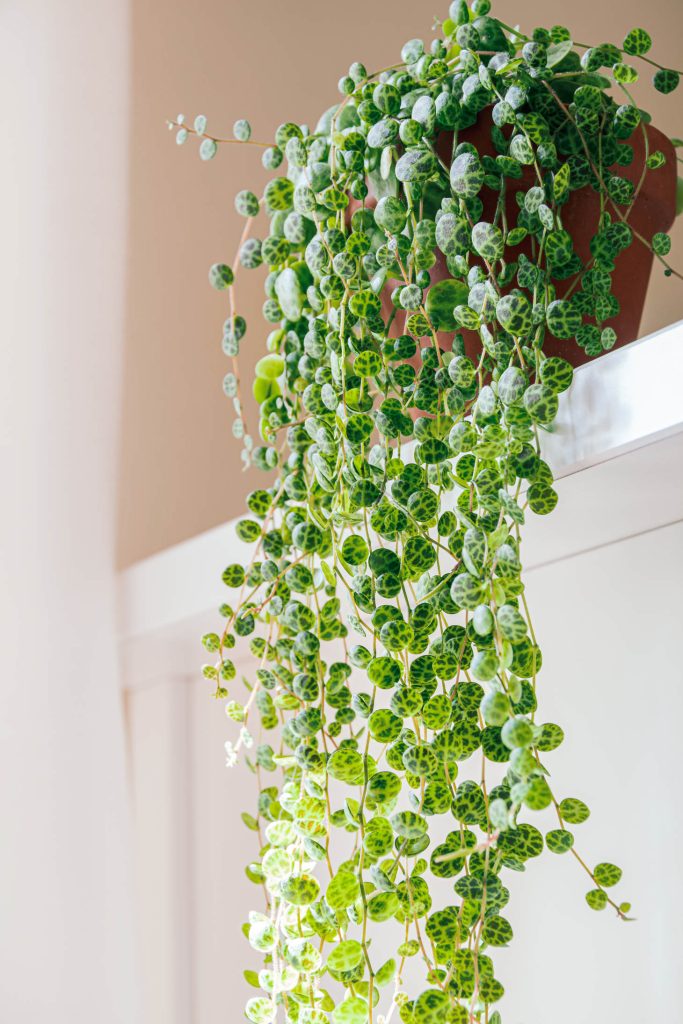
Trailing succulents prefer bright, indirect sunlight, though some varieties tolerate more direct sun if acclimated. Too much direct sun, especially intense afternoon sun, can cause leaf burn. A south- or east-facing window is often the best spot indoors. Outdoors, place them in filtered light or partial shade.
These plants need well-draining soil succulent mix, to avoid root rot. Water only when the soil is dry to the touch. Too much water is a leading cause of problems.
They can tolerate dry indoor air. Keep temperatures between 60°F and 80°F (16°C-27°C), and avoid letting them freeze, as cold can damage or kill them.
Best Methods for Propagating Trailing Succulents
Trailing succulents can be multiplied using a few tested methods. You need the right technique for your specific succulent type and a clean, careful approach to help your new plants grow strong roots.
Stem Cuttings Technique
The stem cuttings method works well for many trailing succulents like String of Pearls or Sedum burrito. Here’s how to propagate trailing succulents using the stem cuttings method:
- Start by picking a healthy stem, about 4 to 6 inches long.
- Use clean, sharp scissors or a knife to cut it below a leaf node.
- Remove leaves from the bottom few inches of the stem.
- Let the cutting dry for a few days until the cut end forms a callous. This prevents rot when planted.
- Plant the calloused end into well-draining succulent soil.
- Water lightly and place the cutting in bright, indirect sunlight.
- After two to four weeks, you may notice new roots.
- Once it’s rooted, you can resume regular watering.
Key Points:
- Always use clean tools.
- Let cuttings dry to avoid rot.
- Use a light, well-draining mix.
Leaf Propagation Process
Some trailing succulents, particularly those with plump leaves like Graptopetalum or Sedum morganianum, can be propagated from individual leaves.
- Gently twist and pull a healthy leaf from the stem, making sure you get the whole leaf. Damaged or torn leaves may not root.
- Place the leaf on a dry surface out of direct sun for a few days so it can callous.
- Lay the calloused leaf on top of moist succulent soil. Do not bury it.
- Mist the soil lightly every few days.
- New roots and a tiny rosette should start to form at the base of the leaf in a few weeks.
- Once the new plant is bigger, you can move it to its own pot.
Tips:
- Choose thick, undamaged leaves.
- Keep soil slightly moist, not wet.
- Be patient; roots take time to appear.
Water Propagation Steps
Some trailing succulents with soft, flexible stems can also root in water. To propagate trailing succulents like String of Bananas (Senecio radicans or Curio radicans) or Crassula perforata (String of Buttons) in water, follow these steps:
- Cut a healthy stem section 4 to 6 inches long and remove the bottom leaves.
- Place just the cut end in a small jar of clean water. Make sure no leaves are submerged, as they can rot in water.
- Change the water every few days to keep it fresh.
- Put the jar in a spot with indirect light.
- After about two weeks, small roots should appear.
- Once roots are 1-2 inches long, transplant the cutting into well-draining soil.
- Water very lightly at first to help the plant adjust to soil.
Important Details:
- Only the stem should touch water.
- Use clean water and change it frequently.
- Move cuttings to soil after roots grow.
Frequently Asked Questions
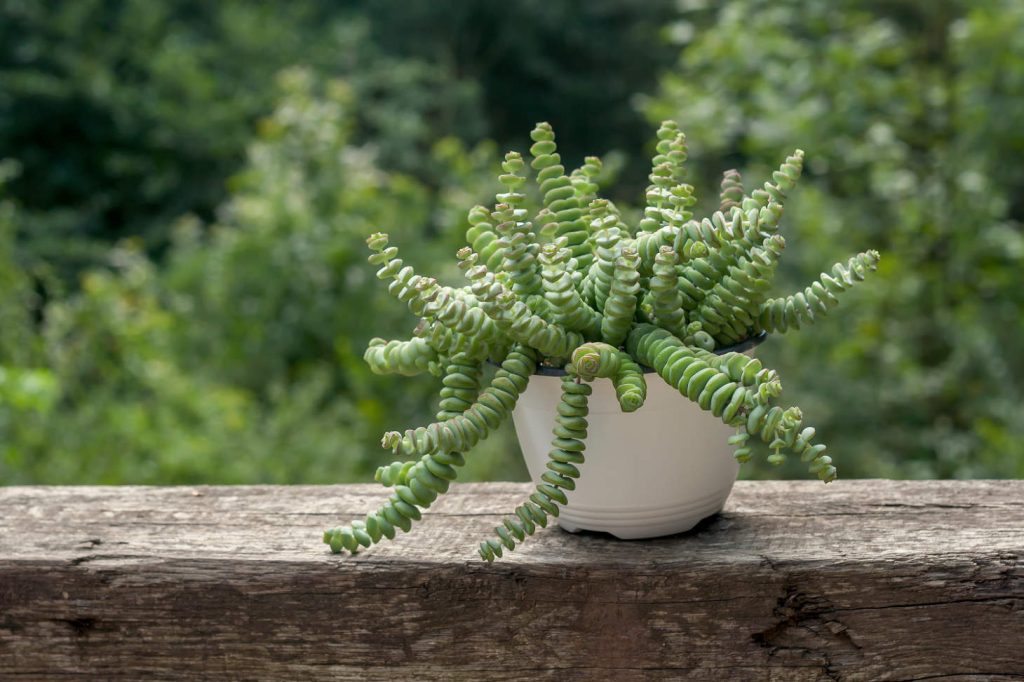
When you propagate trailing succulents, it is important to know which methods work best, what environment helps them root, and how to spot common pitfalls. Each step, from choosing soil to knowing when to transplant, can affect how successful you are.
What are the best methods for rooting cuttings of trailing succulents?
The most effective way is to use stem cuttings. Simply snip a healthy section of the stem and let it dry for a few days until the end forms a callous. Place it on well-draining soil and mist lightly until roots start to grow.
Leaf cuttings can work for some types, but trailing succulents usually root better from stem cuttings.
How long does it take for trailing succulent cuttings to root?
On average, you can expect roots to start forming in about two to four weeks. The exact time depends on the species, the environment, and how fresh the cuttings are.
Some succulents may take a bit longer, especially if kept in cooler or darker conditions.
Can you propagate trailing succulents in water, and if so, how?
Yes, you can propagate many trailing succulents in water. Place the cut end of the stem just above the water surface so that only the bottom touches.
Change the water if it gets cloudy. Roots should appear in two to four weeks. After roots develop, you can transfer the cutting to soil.
What type of soil is ideal for propagating trailing succulents?
A gritty, well-draining soil works best. You can use a succulent mix or combine regular potting soil with sand or perlite.
Avoid heavy or dense soils because they hold too much moisture and can cause rot in young cuttings.
How do I know when to transplant rooted trailing succulent cuttings?
Wait until the roots are at least 1-2 inches long and some new leaves have started to grow. This shows the plant is strong enough for transplanting.
Handle the roots gently and move the cutting to its permanent pot with fresh well-draining soil.
What are the common mistakes to avoid when propagating trailing succulents?
Don’t overwater cuttings, as too much moisture leads to rot. Let the cut ends dry or heal before placing them on soil.
Also avoid using ordinary garden soil, which is often too dense. Keep cuttings out of direct sun until new growth appears.

